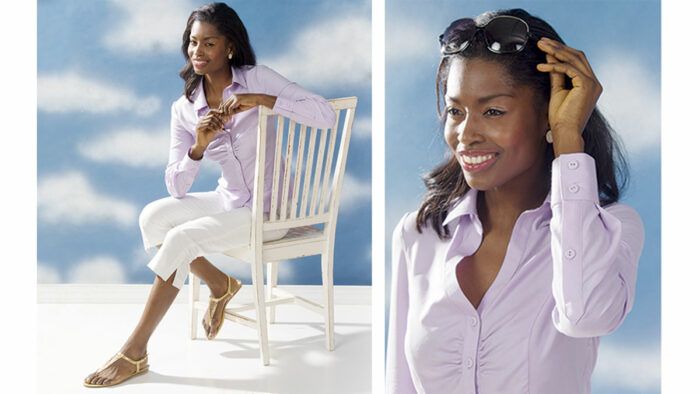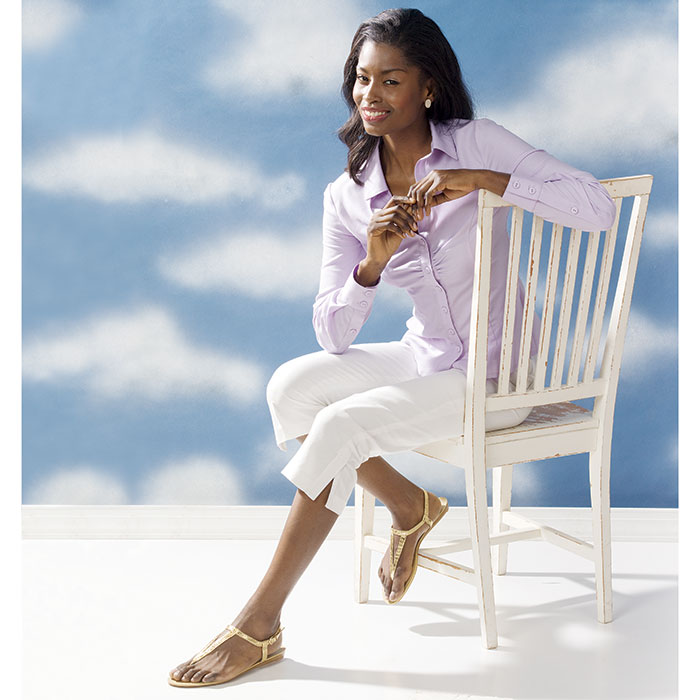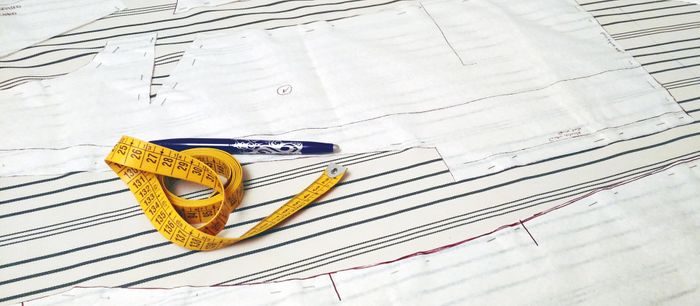How to Make a Precise Sleeve Placket
How to make a classic sleeve finish
Design is all about details, especially when it comes to a classic garment like a button-front dress shirt. Many shirt patterns, however, leave off one small detail that can make all the difference between a homemade and a professional look: a sleeve placket. It’s been replaced by a continuous binding that finishes the vent, but lacks crispness. On the rare pattern where a placket is included, it is often too short and too narrow to handle easily.

You don’t have to make do with an inferior vent finish. I’ll show you how to add a classic sleeve placket to any shirt. My placket pattern and method make it simple to get professional-looking results. The pattern adapts easily for each wearer, and its 1-inch finished width gives enough room for buttons.
I recommend making a few sample plackets for practice. The payoff is a polished, refined sleeve finish.
Mark the sleeve and prep the placket pattern
Make a practice placket first, and use a fabric with obvious wrong and right sides to eliminate confusion. Precise, on-grain cutting ensures the placket’s foldlines crease crisply and accurately. Carefully mark all foldlines, clipping lines, and stitching lines.

Download…
Start your 14-day FREE trial to access this story.
Start your FREE trial today and get instant access to this article plus access to all Threads Insider content.
Start Your Free TrialAlready an Insider? Log in





Great article. I can't wait to try this.
Great idea adding placket to bottom of capris
I have used this placket pattern and it is great. It is the same as in David Coffin's book. However, I did not think about using the steam-a-seam. Great idea.
I recently made a dress with a front placket and I wasn't 100% thrilled with the outcome. I wish I had this information then! That's okay – I have it now.
What an amazing article! A beautiful technique. I will bookmark this for future reference. Thank you Marguerite and Threads!
Marguerite is amazing....thanks for sharing this pattern!
One thing I always do where clipping a corner is concerned is to shorten the stitch length about 1/2" before the corner and continue the short stitch length until the entire corner is sewn.
Beverly A.
Thank you for another great sewing idea. You always make it so easy.
thanks for the clear explanations and great photos to help me visualize this.
I've used the placket pattern from David Page Coffin's book and love it! It is flawless. I have altered the pattern slightly to increase the seam allowance. This helps me in two ways: 1) it's easier to turn under 1.25 inches rather than 1/4 inch, and 2) the seam allowance acts as an interfacing to give the placket more body. I alter the seam allowance on the 'right hand' side (the one with the #6 fold to 1.25. The 'left hand side' I increase the seam allowance to .5.
I used to make my shirt sleeve plackets in two separate pieces, until I was altering sleeves on an expensive RTW shirt and first saw this one!
Once I changed to a one-piece placket, it looked so much more neat and professional.
Thankyou for including a printable pattern piece for us, now all my shirts and blouses will look fabulous!!
I was wondering about different ways I might use this when I first opened it and then while copying I saw the capris. Great idea.
I've been trying to adapt a placket pattern on my own with varying success. This looks like just what I need. Thank you!
Wow, so very clear! I nearly tore my hair out over the placket the first time I made a man's dress shirt. This will become a staple technique for me, I am sure.
I like the PDF downloads. A great way to tangibly increase my resources. Thanks
This and all of your how to are so helpful. Thank you.
Althea
This works very well with crisp/firm fabrics. I had a little trouble working it on a brushed cotton though - too soft I suppose.
Also - I discovered that when converting a continuous lap opening to this placket opening it increased the sleeve seam length by about 1 1/2 inches. It no longer fit the cuff seam.
Adding/increasing the pleats looked bad, so I gathered the excess to make the seamlines match.
Redrafted the sleeve to remove the excess for the next time.
I need to make a few more of these to perfect the technique - the ones I have made look great - on the outside. Wondering how to get a really nice clean finish on the inside - like you see in men's dress shirts, at least the ones hubby has. Any ideas or tutorials, etc. Would so appreciate it.
I need to make a few more of these to perfect the technique - the ones I have made look great - on the outside. Wondering how to get a really nice clean finish on the inside - like you see in men's dress shirts, at least the ones hubby has. Any ideas or tutorials, etc. Would so appreciate it.
Can't wait to try this!😊